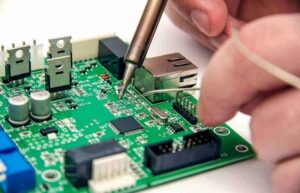
How are cryptocurrencies mined? The potential of Ethereum, Bitcoin and other cryptocurrencies is huge. How do you get your hands on them? One of the answers is cryptocurrency mining. In this guide, we give you advice on which machine to choose, which digital gold to mine and when to mine it
To start with, most basics tools are broadband connection, preferably fibre broadband with a very high speed and hardware that will mine the cryptocurrency for you.
How do you mine cryptocurrencies? What is a cryptocurrency miner?
Before we get into the details, it is important to clarify the terms used in the industry. The term “cryptocurrency mining” is just an analogy to mining precious metals such as gold or diamonds. This is why the people who “mine” cryptocurrencies are called miners, and the place where the mining takes place is called a mine. In reality, however, they are not literally mining.
What is a cryptocurrency miner?
It is a machine with the computing power to solve a complex cryptographic task, namely the hash. The computation allows a new block to be added to the cryptocurrency network, or blockchain. However, these blocks are not cryptocurrencies, but merely a space in which transactions can take place. For adding a new block to the network, the miner is rewarded with a certain amount of cryptocurrency.
Choosing a cryptocurrency miner
There are three types of entities with this designation. The first is the GPU miner, which is a device with a graphics card. The graphics processing unit (GPU) on the graphics card can perform the mathematical calculations needed to compute a hash function or decrypt a block cipher.
The central processing unit (CPU) can also perform these calculations. Cryptocurrency mining, on the other hand, uses GPUs because they can be interconnected to increase the hash rate. One of the advantages of GPUs is that they can be reprogrammed. This allows a Bitcoin miner to mine, for example, Ether. With increased hash rates, it is better to use more powerful application-specific integrated circuits (ASICs). Unlike GPU miners, these are designed specifically for this task.
ASICs are also quieter and smaller. This means that more machines can be placed in a smaller area. The downside is that they are only suitable for the hash algorithm. This means that an ASIC cannot be reprogrammed to break different cryptocurrencies.
How are cryptocurrencies broken? There are also copy machines that are FPGAs (field programmable gate arrays). This kind of cryptocurrency memory can be reprogrammed and is smaller and quieter than an ASIC. It also generates less heat. It is also more powerful than a GPU copier, but slower than an ASIC. Despite its lower hash rate, its use can be cost-effective due to its low power consumption.
How does cryptocurrency mining work?
Just like with early days of the internet when we started with dial up modems and currently are using ultra fast fibre broadband example of which is an up to 1000Mb/s Atlantek Broadband Top Fibre Package, the technology has changed immensely.
The first cryptocurrency, bitcoin (BTC), initially had a very low hash rate. However, the network or blockchain for this cryptocurrency is designed in such a way that the difficulty of mining increases over time. This reduces the miner’s reward, as he receives less and less bitcoins for decrypting the blockchain. The same is true for other cryptocurrencies.
Consequently, cryptocurrency mining is now the domain of specialised companies. The mines they own resemble server rooms. Hundreds or even thousands of interconnected miners are placed in the corridors. Their shared hash rate allows cryptocurrencies to be mined economically, despite their high energy consumption.
What cryptocurrencies can be mined?
Almost all of the more than 20 000 cryptocurrencies currently in use are more or less inspired by bitcoin. However, there are many digital assets that cannot be mined, unlike the pioneering cryptocurrency.
In addition to Bitcoin, cryptocurrencies created after the separation of the blockchain include Bitcoin Gold (BTG), Bitcoin Cash (BCH) and Bitcoin Satoshi Vision (BSV). Cryptocurrencies independent of Bitcoin, such as Ether (ETH), Monero (XMR) and Litecoin (LTC), can also be mined.
It is important to note that not all cryptocurrencies can be mined separately. Dogecoin (DOGE) is a good example. It is closely related to Litecoin, as it is designed based on its code. Dogecoin must therefore be mined using a process called






